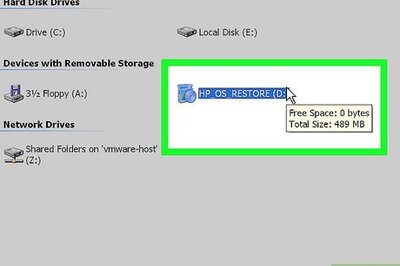
views
The consortium of lenders, led by the State Bank of India (SBI), moved the National Company Law Tribunal (NCLT) to seek resolution under the Insolvency and Bankruptcy Code (IBC) in the Jet Airways case. The move comes after the lenders failed to get a buyer for the debt-laden airline.
So with the airline now taken to NCLT, what really lies ahead? Here’s a look at various steps involved in the insolvency resolution process:
1) Application to NCLT
A financial or operational creditor of a company, or the company itself, can apply to NCLT for an order to admit that company (or “corporate debtor” as the IBC calls it) into the corporate insolvency resolution process (“CIRP”).
The creditor has to show that there has been a default in the payment of its debt exceeding Rs 1 lakh. NCLT has to pass an order either admitting or denying the application within 14 days
2) CIRP starts; Interim Resolution Professional takes over
Once a corporate debtor is admitted into CIRP, its board of directors is suspended and its management is placed under an independent “interim resolution professional”. From this point on and until the end of the CIRP, the erstwhile management ceases to have any control over the affairs of the company.
Simultaneously, a moratorium takes effect which prohibits:
(a) the continuation or initiation of any legal proceedings against the corporate debtor
(b) the transfer of its assets
(c) the enforcement of any security interest
(d) the recovery of any property from it by an owner or lessor
(e) the suspension or termination of the supply of essential goods and services to it.
The moratorium lasts till the corporate debtor is in CIRP.
3) Verification and classification of claims, appointment of the resolution professional
The interim resolution professional will then invite and verify claims made by the corporate debtor’s creditors, classify them, and within 30 days of the admission into CIRP, form the committee of creditors (COC), comprising all the financial creditors of the corporate debtor.
4) Appointment of the resolution professional
COC then appoints an independent person to function as the “resolution professional” for the remainder of the CIRP term. The resolution professional may be the same person as the interim resolution professional, or someone else, depending on what the COC wants.
5) Approval of the “resolution plan” or liquidation
Within 180 days from the start of the CIRP, a resolution plan for the revival of the company needs to be approved by creditors holding 75% of the financial debt. NCLT can extend this by another 90 days.
If a plan is approved within this period and is sanctioned by the NCLT, it is adopted and becomes binding on all “stakeholders” involved in the CIRP.
And if no resolution plan is approved in this period, the NCLT is required to order the liquidation of the corporate debtor.
If an order of liquidation is passed, a liquidator will be appointed by the COC to sell the assets of the corporate debtor and distribute the assets among the stakeholders. The distribution will be made in accordance with a “priority waterfall” set out in Section 53 of the IBC. Priority waterfall provides priority to secured creditors over government dues and to financial creditors over operational creditors.


















Comments
0 comment